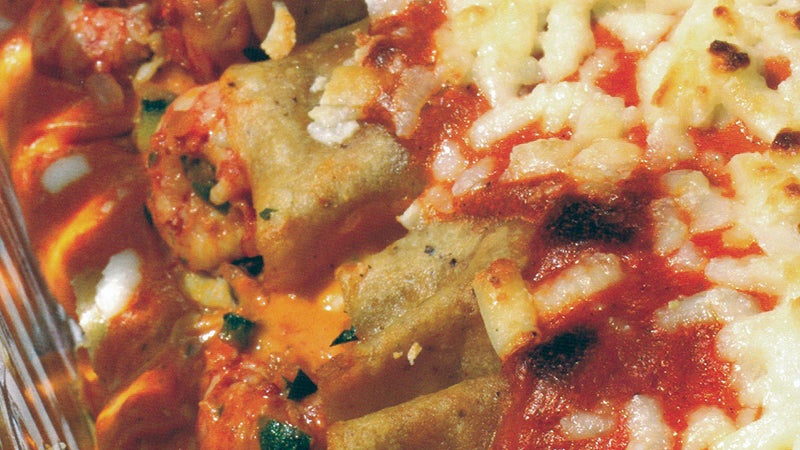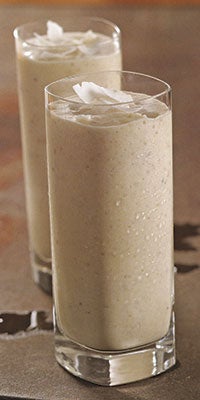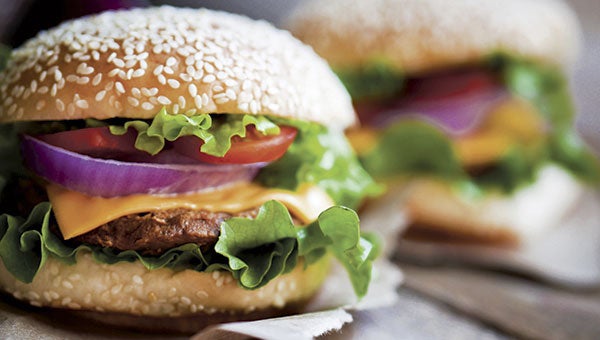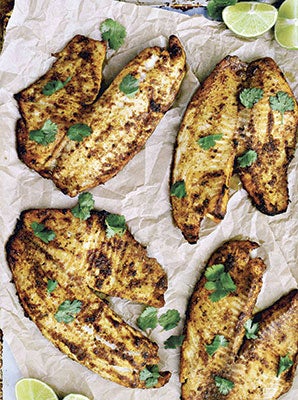Green – it’s not just for the kitchen walls
Published 12:00 am Saturday, August 7, 2010
I bought a new cookbook the other day called In The Green Kitchen by Alice Waters, the main figure in the organic food movement, and owner of Chez Panisse, a famous restaurant in Berkeley, Calif. She was one of the organizers of Slow Food Nation, a large, joyous gathering in San Francisco that attracted thousands of cooks and eaters, farmers and foragers – all united by a passion for food and a sustainable future. People came from all over the country to taste and learn, and to show what all good cooks have in common: a set of basic techniques that are universal to all cuisines. The subtitle is “Techniques to Learn by Heart.” Once learned by heart, these are techniques that free cooks from an over dependence on recipes and a fear of improvisation. A couple of Southerners share their art as well – Poppy Tooker of New Orleans and Scott Peacock, now of Atlanta, but originally from south Alabama (Hartford in Geneva County).
I have always said that good cooking does not require a lavish kitchen or a lot of specialized equipment. I was happy to learn that the Slow Food Nation demonstrations only had a table, a couple of sharp knives and a cutting board, a hot plate and a few pots, mortar and pestle, and a compost bucket. The demonstrations were given by famous chefs and not-so famous, but they gave easy techniques that you can learn by heart. The book has those recipes and techniques from those chefs, and I thought some worth sharing.
Here is A Green Kitchen Manifesto:
• Delicious, affordable, wholesome food is the goal of the green kitchen.
• An organic pantry is an essential resource.
• Buy food that is organic, local and seasonal.
• Cooking and shopping for food brings rhythm and meaning to our lives.
• Simple cooking techniques can be learned by heart.
• Daily cooking improves the economy of the kitchen.
• Cooking equipment that is durable and minimal simplifies the cooking.
• A garden brings life and beauty to the table.
• Composting nourishes the land that feeds us.
• Setting the table and eating together teaches essential values to our children.
The most important part of cooking is shopping and provisioning, before the real cooking begins. This is the hard part for most of us. Shopping takes time, and sometimes the products are inferior. That is why it is best to buy local when you can. These are some things one should have in one’s organic pantry.
• Olive oils and vinegars
• Fresh herbs and salad greens
• Salts and peppercorns
• Garlic and shallots
• Chile peppers and spices
• Onions, carrots and celery
• Pastas and noodles
• Seasonal vegetables and fruits
• Rice and dried beans
• Meat, poultry and fish
• Teas, coffee and wine
• Milk and eggs
• Flours and sugar
• Butter and cheese
• Baking powder and soda
• Chicken stock
• Vanilla and vanilla beans
• Nuts and bread
Having a select and thoughtfully stocked pantry, knowing you always have a few good things at home to cook and eat, means you have something to look forward to, and cooking can be a joy, not a chore.
The book is filled with techniques such as how to wash lettuce, dress a salad, poach an egg, grill meat, make real mayonnaise, make bread, roast, steam and blanch vegetables…you name it, and it is all here.
I picked out a few items that I thought were interesting and everyone should know how to do.
Washing Lettuce
To wash lettuce, fill a large basin with cold water—your kitchen sink or a large bowl.
Before washing heads of lettuce, remove any damaged outer leaves and cut off the stem ends. Separate the leaves, dropping them into the water and swish them around with your hands. Leave the lettuce in the water a minute or two to let any dirt settle to the bottom, then lift the leaves out of the water and into a colander to drain. If the lettuce is still gritty, change the water and wash again.
Dry the lettuce thoroughly. If the leaves are wet, the dressing won’t stick, and its flavor will be diluted. Put the leaves into a salad spinner in small batches, no more than half full at a time, and spin the leaves dry. Empty the water from the spinner after each batch. Lay the leaves out in a single layer on a clean dish towel and roll the towel up. (If you don’t have a salad spinner, drain the lettuce in a colander before layering the leaves between towels and rolling the towels up.) Refrigerate until you are ready to dress and serve the salad.
Dressing a Salad
Garlic vinaigrette is the dressing I make most often. The first step in making a vinaigrette is to macerate garlic in vinegar and salt. The vinegar softens the sharp edges of the garlic, and the salt tames the sharp edges of the vinegar. You can mix different kinds of vinegar; a few drops of balsamic vinegar can temper a wine vinegar that’s too strong. Taste for balance and adjust by adding more salt or vinegar; it should be neither too salty nor too acidic. The mixture should taste delicious by itself.
Garlic Vinaigrette
4 servings
1 small garlic clove
Salt
2 tablespoons red wine vinegar
Fresh-ground black pepper
3 to 4 tablespoons olive oil
Put a peeled garlic clove and two big pinches of salt in a mortar and pound into a purée, with no chunks remaining. Add the wine vinegar, grind in some black pepper and taste for the balance of salt and vinegar. Allow to macerate for a few minutes, and whisk in olive oil. Taste the dressing with a leaf of lettuce. It should taste bright and lively without being too acidic or too oily; adjust the salt, vinegar or oil as needed.
To dress a salad, put several generous handfuls of washed and dried lettuce in a large bowl. Toss with about three quarters of the vinaigrette and taste. The lettuce should be lightly coated but not overdressed; add more dressing as needed.
Note: Use a finely diced shallot instead of, or in addition to, the garlic paste.
A squeeze of lemon juice added to the dressed salad at the last moment can add a brightness that brings up all the flavors.
Flavoring a Sauce
A simple uncooked sauce of fresh herbs brings aliveness to the table. Salsa Verde (green sauce) is a versatile sauce of parsley and olive oil flavored with shallots, capers, and lemon zest. This sauce will brighten and complement many dishes, especially grilled vegetables, meat and fish. I am making it tonight with grilled halibut.
Salsa Verde
1 garlic clove, peeled
1 tablespoon capers, rinsed
2 salt-packed anchovy fillets rinsed (optional)
1 shallot, peeled and finely diced
Grated zest of 1 lemon
½ cup parsley leaves, washed, dried and chopped
About ½ cup olive oil
Salt and fresh ground black pepper
In a mortar, pound the garlic and capers (and anchovies, if you like) to a paste. (Or, if you don’t have a mortar, chop them together very fine). Stir in the shallot, lemon zest, freshly chopped parsley and olive oil, and season with salt and pepper to taste. Let the salsa sit for 30 minutes or so, for the flavors to develop, then taste them again for seasoning. Add more or less oil depending on what you’re serving it with: grilled meat and vegetables might want less oil, fish a bit more.
Next week we will continue with techniques for wilting greens, cooking rice, and boiling pasta. Maybe everybody knows these things but I am sure there are some of us who could use a refresher course.





